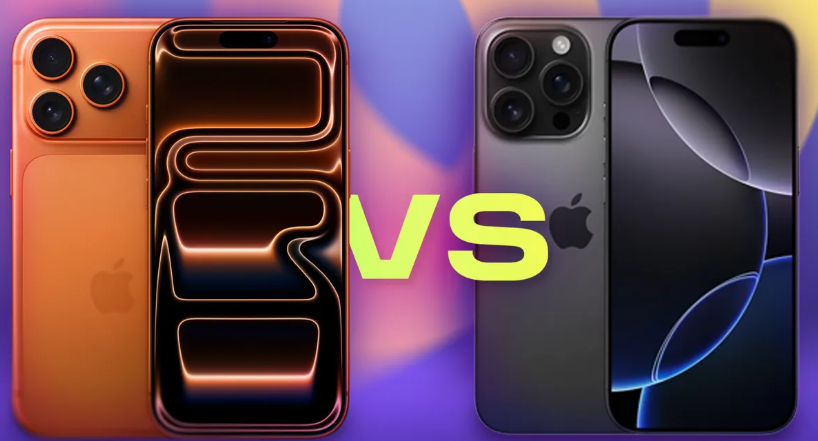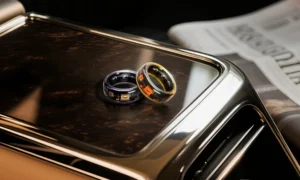
Key Takeaways
- The iPhone 17 introduces a suite of significant, user-centric design changes, moving beyond mere aesthetics to improve functionality and everyday use.
- The most notable changes include a shift from a titanium frame back to a specialized aluminum alloy, a new 120Hz display for the standard model, and a redesigned camera module.
- These features are not just for looks; they are a strategic response to user feedback, directly addressing issues like overheating and the demand for a smoother user experience on all models.
Selection Criteria: Evaluating the iPhone 17's Design
When analyzing the new iPhone 17 design, we need to go beyond a simple list of new features. Here are three criteria to help you understand the strategic importance of each change:
- Functional Improvement: Does the new feature directly solve a problem or enhance performance? For example, the new material choice is less about looks and more about heat dissipation.
- User Experience (UX) Enhancement: How does the new design feature make the phone better to use on a daily basis? This includes everything from how the phone feels in your hand to how smooth the screen animations are.
- Future-Proofing: Does the design change ensure the phone remains relevant and high-performing for years to come? The inclusion of a feature like the 120Hz display is a prime example of this.
The Most Important New Design Features
1. The Switch to a Specialized Aluminum Frame: Function Over Form
One of the most talked-about new design features of the iPhone 17 is the return to a specialized aerospace-grade aluminum alloy for its frame, a departure from the titanium of the Pro series. This change is a direct response to thermal performance issues in previous models. Aluminum is a far superior conductor of heat than titanium, allowing the iPhone 17 to more effectively dissipate heat from its powerful A18 chip. This means no more overheating during intense gaming sessions or while shooting a long 4K video.
- Recommended for: Power users and mobile gamers who push their devices to the limit. The new aluminum frame ensures a stable, high-performance experience, making it a better tool for demanding tasks.
2. The 120Hz Display: A Universal UX Upgrade
For the first time, a 120Hz refresh rate display is standard across the entire iPhone 17 lineup. This is arguably the most impactful new design feature for the average user. It makes everything from scrolling through web pages and social media to swiping between apps feel incredibly fluid and responsive. The difference between a 60Hz and 120Hz display is night and day, making the iPhone 17 feel significantly faster and more modern from the moment you pick it up.
- Use Case: Imagine a photographer scrolling through a gallery of high-resolution images. The 120Hz display makes browsing your work feel incredibly smooth, highlighting the sharpness and detail of each shot without any motion blur. This feature is a massive upgrade for anyone who values a premium visual experience.
3. Redesigned Camera Module and Ergonomics
The iPhone 17 features a redesigned camera module that is more streamlined and less obtrusive. This subtle but important change makes the phone feel more balanced and less prone to wobbling on a flat surface. Furthermore, the new frame has slightly more rounded edges than its predecessor, improving grip and making the phone more comfortable to hold for extended periods.
- Recommended for: Professionals who use their phone for video calls and presentations, as the new design is more stable when placed on a desk. Also great for students and casual users who want a comfortable and reliable daily driver.
Comparison Table: New Features vs. Old
| Design Feature | iPhone 17 (New) | Previous Standard iPhone (Old) |
| Frame Material | Specialized Aluminum Alloy | Titanium / Surgical-Grade Steel |
| Display Refresh Rate | 120Hz (Standard on all models) | 60Hz (Standard models only) |
| Camera Module | Streamlined & less prominent | More prominent & bulky |
| Ergonomics | Lighter, more rounded edges | Heavier, sharper edges |
| Thermal Performance | Excellent | Good (prone to heating with intense use) |
FAQ: Your Top Questions Answered
- Q: Is the switch to aluminum a downgrade in durability?
- A: No. While titanium is technically a stronger material, the new aerospace-grade aluminum is incredibly durable and resistant to scratches and scuffs. The trade-off was made to improve thermal performance, which is a more critical factor for daily use.
- Q: Will the 120Hz display drain the battery faster?
- A: Not significantly. Apple's new display uses an intelligent, adaptive refresh rate technology. It automatically lowers the refresh rate when you're doing something static (like reading an article) and ramps it up for tasks like scrolling or gaming. This ensures you get the best of both performance and battery life.
- Q: Is the iPhone 17 design revolutionary or just a minor update?
- A: The new iPhone 17 design is an evolutionary step, not a revolutionary one. It doesn't radically change the phone's appearance but instead focuses on significant, user-centric functional improvements that make the device more comfortable and efficient to use.








